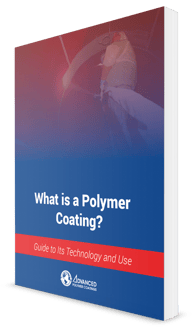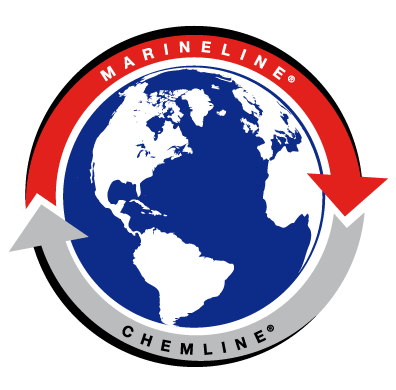An industrial coating's primary goal is to protect from corrosion and withstand a wide array of hazardous chemicals. Choosing the right coating is as important as the coating itself. Failing to select the correct liner can span various issues, from maintenance to premature failure issues.
Our goal is to bring you the best coatings with their respective application that will meet your needs as an industrial coatings solutions provider. We want the selection of a lining for your project to be easy. And we understand the process to ensure everything goes right and the coating solution matches its intended environment. Eliminating specific steps can result in its early failure.
This article focuses on the common causes of coating failures, preventions, and remedies.

Coatings Failure - Why a Preventive Strategy is the Best Way to Avoid It
First, let's talk about why coat ...
Most surface coatings are based on synthetic polymers, industrially produced, and form tough, durable films when applied to surfaces. At APC, our chemical coatings are high-performance specialty coatings that can resist corrosive acids, alkalis, and solvents at various temperatures.
Here are seven top reasons to coat and protect your assets:
- Versatility for asset optimization
- Long performance lifespan
- Faster, easier cleaning
- Resistance to wear, abrasion and impact
- Long performance history
- Virtually non-permeable for assurance of product purity
- Superior bond strength and adhesion
However,
There are pros and cons to everything, and the topic of industrial coatings is no different. Despite all the benefits and advantages, if not done correctly, there can be a coating downside.
Coating failure or defects occur when coatings no longer perform at their designed function and can take the form of blistering, chalking, peeling, and the list goes on.
But,
There are solutions and process improvements.
What is a Coating Failure, and Why Does it Happen?
Common causes for coating failures range from inadequate surface preparation, non-friendly environment, improper application technique, and incompetent formulation.
1. Inadequate surface preparation
One of the essential steps in applying a coating is surface prep. Proper adhesion between the substrate and the coating requires adequate surface preparation.
Weak adhesion from inadequate surface prep can result in blistering, cracking, orange peeling, and more. We'll dive more into the types of defects in the next section.
2. Non-friendly environment
It is crucial that the temperature, relative humidity, and dew points are within the coating manufacturers' specifications. Environmental factors during an application could cause coating failures. This is another example of where blistering and cratering could present themselves.
Industrial coatings require a clean, stable environment where the correct temperature and humidity conditions are favorable.
3. Improper application technique
Knowing the proper application technique will save you time and money. Hiring an experienced contractor for an application will help you avoid coating failures.
An experienced applicator will do a thorough coating integrity check, looking for any faults and where the coating is not performing its designed function.
4. Incompetent formulation
An experienced contractor knows the coating formulation must meet the product's end-use environment. Some needs must also be met, such as food safety regulation, compliance, or corrosion protection, to name a few.
Common characteristics of an inadequate formulation can result in erosion, chalking, and cracking.
17 Coating Defects to Avoid
Defects present in industrial coatings/linings can lead to premature failure.
Therefore, it is essential to conduct a proper inspection to avoid placing a coating into service when such defects are present.
Let's face it.
No one wants a coating to fail. Coating failures lead to extra costs, project delays, out of service equipment, and many other things.
Recognizing and dealing with the coating failure, understanding its cause, and knowing where to seek the remedy will lead to less maintenance costs and a better overall appearance.
17 possible coating defects that may occur:
1. Blistering

Description: Small to large broken or unbroken bubbles; the surface may feel like sandpaper.
Cause: Surface contamination before paint application is a cause for blistering. Solvent entrapment can happen due to the paint being applied too thick or over-coated too soon. Coating applied when humidity is too high can also enhance blistering.
Remedy: Blowers in enclosed areas to accelerate solvent release; adequate cleaning of surface contamination; proper levels of cathodic protection; abrade back all blisters, fill where necessary, and recoat.
Ensure the correct surface preparation and application for the best prevention.
2. Blushing

Description: Flat finish with a
Cause: Moisture condensation in high humidity with fast evaporating or unbalanced thinner in spray application. The coating may have been exposed to moisture during curing.
Remedy: Abrade back until blushing is cleared and recoat, consider the relative humidity and temperature; respray with retarder add to thinner
The right environmental conditions must be considered before application.
3. Checking

Description: Narrow breaks, usually short, in topcoat that exposes undercoat
Cause: Stresses are matured that cause the surface to become brittle, which causes cracking. Limited coating flexibility, too thick a coat, or applied at too high a temperature are probable causes.
Remedy: Sand or mechanically remove checked coat and apply a fresh coat
4. Cracking

Description: Deep cracks in the
Cause: Coating shrinkage, limited flexibility, excessive thickness, or applied/cured at too high a temperature - the thicker the film, the greater the possibility it will crack.
Remedy: Sand, blast, or mechanically remove the total coating and apply a new coat.
5. Cratering

Description: Also called pitting. Small, uniform indentations in the film
Cause: Air pockets trapped in the
Remedy: An improved spray technique will help prevent cratering. You can also sand or blast to a smooth finish and apply additional coats to fix.
6. Delamination

Description: Peeling from undercoat or substrate
Cause: Delamination defects are related to separation/lifting of paint from a
Remedy: Sand or mechanically remove all loose paint, clean and roughen a
To further prevent delamination, ensure that contamination has not occurred between coatings. Cleaning and prepping the area is vital.
7. Fish Eyes

Description: Small holes in the coating film. Separation or pulling apart of wet film to expose underlying finish or substrate
Cause: An application over oil, dirt, silicone, or incompatible coating can result in fish eyes.
Remedy: Abrade back until the
8. Mud Cracking

Description: Deep, irregular cracks, looks like dried mud.
Cause: A relatively inflexible coating applied too thick
Remedy: Remove coating and abrasively blast steel before reapplying at a
When applying, adhere to the recommended coating thickness.
9. Orange Peel

Description: Orange peel is exactly what it sounds like. It can be defined as an uneven textured surface or finely dimpled surface texture, appearing dull, which looks like an orange skin.
Cause: Reasons for this defective look could appear from poor atomization of a spray of low pressure, or the spray gun was positioned too close to the surface.
Remedy: Start with an experienced applicator. A professional contractor is familiar with the positioning of the spray gun.
Before cure, brush out the excess coating and modify spray conditions. After cure, abrade back to an even flat surface and recoat. If using a roller, it may be necessary to lay off using a brush or pad after roller application.
10. Overspray

Description: Also called dry spray. Dry, flat, pebbly surface
Cause: Particles reaching surface not wet enough to level because of too rapid solvent evaporation, gun too far from the
Remedy: Before curing, remove by dry brush followed by solvent wiping, after curing, sand and apply another coat.
11. Peeling

Description: Peeling of thick paint from the
Cause: Stress from cured, weathered (contracted) coating exceeds adhesion to the
Remedy: If limited, spot-remove loose coating and apply flexible coating; if extensive, scrape, grit blast, mechanically or chemically remove the coating to the
Using the correct coating system and applying the coat to a clean surface is essential.
12. Pinholing

Description: Tiny, deep holes exposing the
Cause: A common problem with pinholing is the insufficient coating spray atomization, coarse atomization, or settled pigment. Air or gas bubbles burst, making the small holes unable to adhere to the substrate.
Remedy: If uncured, brush out and apply an
13. Pinpoint rusting

Description: Rusting at pinholes or holidays
Cause: Pinholing or too high a steel surface profile for coating thickness
Remedy: Use holiday detector for early detection of pinholes, apply additional coats after mechanical or blast cleaning
Prevention is also attained by ensuring a proper primer coat is applied.
14. Sags

Description: Also called runs or curtains. It is an excess flow of paint.
Cause: Probable causes can include the spray gun was too close while working, the paint was applied too thick, too much thinner was used, or the surface was too hard or glossy to hold the coating.
Remedy:
- Before cure, brush out excess coating and modify the spray condition.
- After cure, abrade back to an even, flat surface and recoat.
- Use the correct application techniques to avoid sags.
15. Undercutting

Description: Blistering or peeling of
Cause: Corrosion products formed where steel was exposed. This undermines and lifts the coating.
Remedy: Early detection of defects with holiday detector and correction and use inhibitive pigments in the primer for a fix.
16. Uneven Gloss

Description: Nonuniform sheen and shiny spots.
Cause: Nonuniform film thickness, moisture in film, temperature change during curing, or paint applied over soft or wet undercoat are probable causes.
Remedy: Allow to dry and apply another finish coat under acceptable conditions for moisture and humidity.
17. Wrinkling

Description: Rough, crinkled surface
Cause: Surface skinning over uncured coating because of too much thickness or too warm weather causing solvent entrapment (uncured paint) under the surface. It is important to let the first coat adequately harden.
Remedy: Scrape off wrinkles and apply a
Conclusion
Industrial coatings are a mixture of raw materials that are engineered to protect your assets. They are mixed, applied to a prepared substrate, and cured for their top performance.
Failures and defects can exhibit themselves at differing times in a coating's life. As displayed above, during an application, you could encounter runs or sags. After the application, orange peel looks could present themselves if not applied correctly. And anytime after that, blistering, rust, and other defects could occur.
Coating failures require further analysis by a coating specialist to maintain their intended purpose and environment. APC is dedicated to providing high-quality polymer coating products for industrial applications. The same concern and pride that we exercise in our manufacturing are also extended to the “human element” of the coating operation – namely, the application of APC’s coatings to various surfaces.
Talk to an expert at Advanced Polymer Coatings today and get a quote on your protective coatings project.





